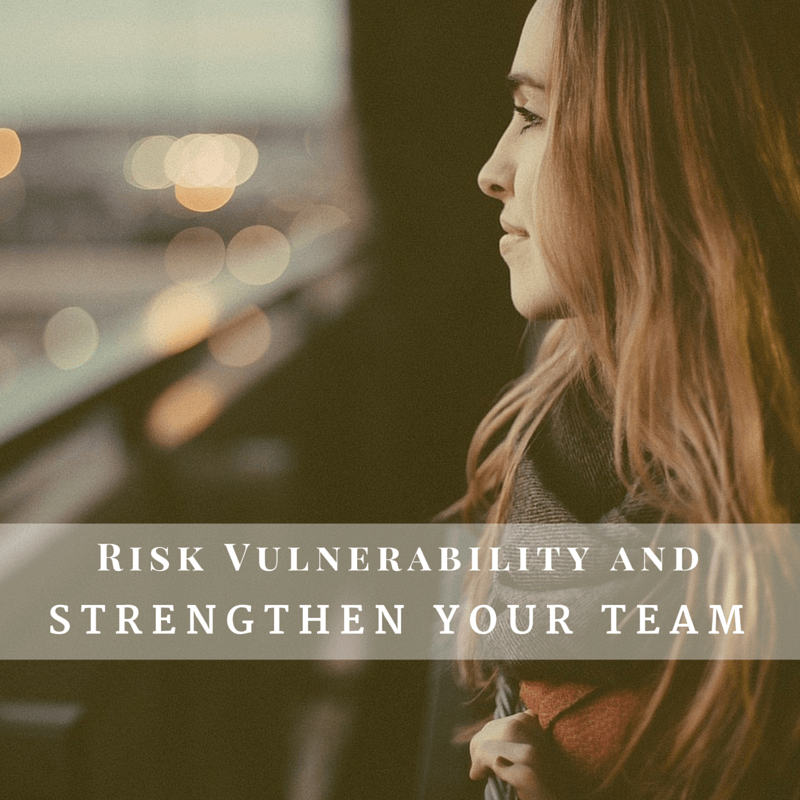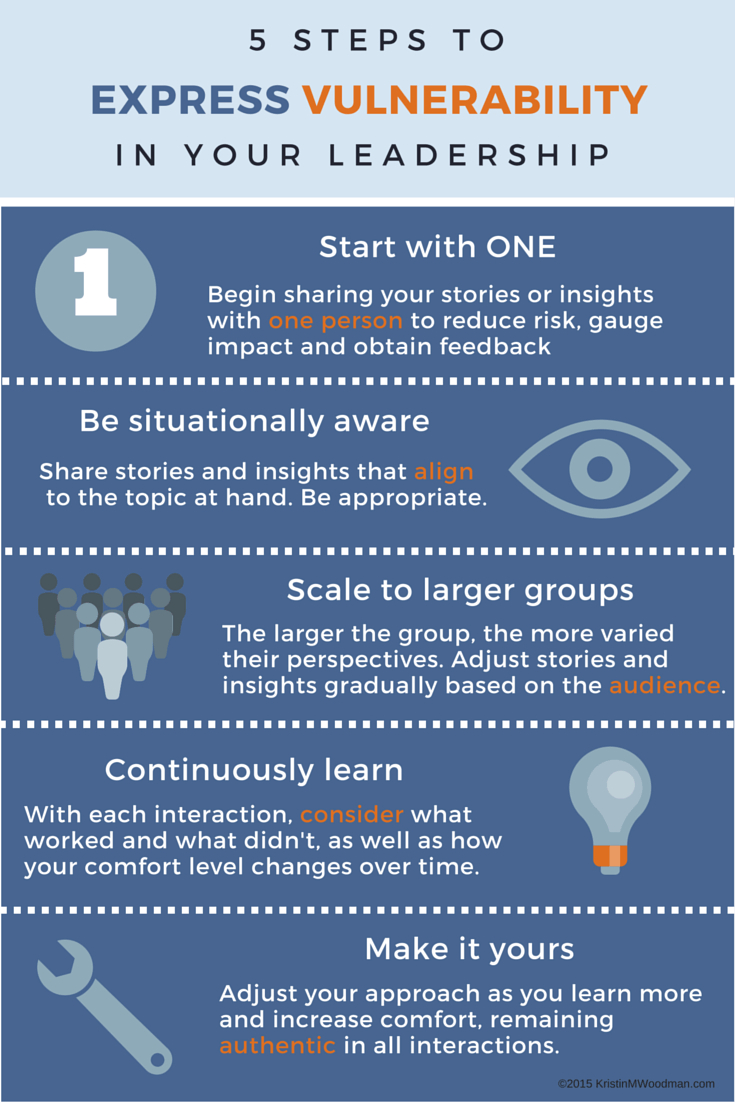[et_pb_section admin_label=”section”][et_pb_row admin_label=”row”][et_pb_column type=”4_4″][et_pb_text admin_label=”Text” background_layout=”light” text_orientation=”left” use_border_color=”off” border_color=”#ffffff” border_style=”solid”]
 If you Google vulnerability, the first entries are about how to defend your systems from attack.
Since the definition of vulnerability is being susceptible to hurt or open to assault, it makes sense that vulnerability is something to protect against.
As human beings, our minds and bodies are designed to protect us. The greater the perceived risk of hurt, the more defenses we have available to us.
While these defenses may be necessary to protect us from physical harm, they put us at great risk in our interpersonal interactions. Our defenses can prevent us from developing meaningful connections with others.
As leaders, those connections make the difference between leading ho-hum teams and amazing ones.
If you Google vulnerability, the first entries are about how to defend your systems from attack.
Since the definition of vulnerability is being susceptible to hurt or open to assault, it makes sense that vulnerability is something to protect against.
As human beings, our minds and bodies are designed to protect us. The greater the perceived risk of hurt, the more defenses we have available to us.
While these defenses may be necessary to protect us from physical harm, they put us at great risk in our interpersonal interactions. Our defenses can prevent us from developing meaningful connections with others.
As leaders, those connections make the difference between leading ho-hum teams and amazing ones.
 If you Google vulnerability, the first entries are about how to defend your systems from attack.
Since the definition of vulnerability is being susceptible to hurt or open to assault, it makes sense that vulnerability is something to protect against.
As human beings, our minds and bodies are designed to protect us. The greater the perceived risk of hurt, the more defenses we have available to us.
While these defenses may be necessary to protect us from physical harm, they put us at great risk in our interpersonal interactions. Our defenses can prevent us from developing meaningful connections with others.
As leaders, those connections make the difference between leading ho-hum teams and amazing ones.
If you Google vulnerability, the first entries are about how to defend your systems from attack.
Since the definition of vulnerability is being susceptible to hurt or open to assault, it makes sense that vulnerability is something to protect against.
As human beings, our minds and bodies are designed to protect us. The greater the perceived risk of hurt, the more defenses we have available to us.
While these defenses may be necessary to protect us from physical harm, they put us at great risk in our interpersonal interactions. Our defenses can prevent us from developing meaningful connections with others.
As leaders, those connections make the difference between leading ho-hum teams and amazing ones.
You’ve got to “know a guy (or girl)”
Before moving to New England, I never really knew my neighbors. If I wanted something done, I’d look up service providers in the yellow pages and later online. When I moved to New Hampshire, all that changed. If you want a fair price and quality work in this area, you need to know someone. We were living with my future in-laws, and looking for a house. Once we found what we wanted, we tried to secure a loan. This was my second home purchase, I had a decade of work experience, and good credit. Yet I couldn’t get a loan that didn’t involve a 10% interest rate. I was worried I’d have to live with it when my manager asked how the house hunting was going. Once I told him the trouble, he gave me the name of his “mortgage guy.” Within 24 hours, we had a competitive interest rate and were well on our way. His “mortgage guy” became my “mortgage guy” and I’ve referred him to many others since then. That’s how business gets done here – you establish trusted relationships and they connect you with others. I found that the same rules held in my day job.Human connections inspire trust
Working with Marines, as a young female civilian, taught me that vulnerability was a risk. I learned to hold myself apart. At work, I didn’t share my personal life. I didn’t socialize. That approach kept me safe. In an environment where chain of command is paramount and orders are given and obeyed, it may work. Times have changed, and there are few places left where that approach would work. Which I quickly figured out. When I started working for my current company, my team wanted to know me. They asked questions about my interests and my family. They demanded that I bring in pictures of my dogs and my husband. It was uncomfortable at first, but I realized they needed to know me to trust me. They needed to trust me to follow me. [Tweet “Teams need to know their leaders to trust them. They need to trust them to follow them.”] It started slowly. I practiced in one-on-one sessions first. Then in small groups. Sometimes I overshared. Sometimes it might have been a story that wasn’t the best example in that particular instance. I kept going. I figured out what worked and what didn’t. I made mistakes and I learned from them. I determined how to be vulnerable in a way that was comfortable for me and for them. Related: check out the VITAE leadership framework and how Vulnerability is the foundation that starts it all.Vulnerable does not mean weak
If leaders let their teams see them as human, what about when things go wrong? Will others still think we can guide them through the chaos? That was my concern, even after I learned how to be vulnerable with my teams. It held me back when engaging upwards – to my leadership and stakeholders that (I thought) needed to know I had everything under control. Being a machine can be effective. My stakeholders trusted me. I would make a commitment and deliver on that commitment. They never saw me flinch. Yet I wasn’t a machine anymore. The reality is that I never was, but when we start allowing others to really see us, and connect with us, we expect more from our relationships. We expect more from our own leaders. Eventually, I decided I wanted to have a similar relationship with my leaders and stakeholders as I did with my teams. I asked for occasional input on things I would normally push through on my own, and let them know I didn’t have all the answers. I also let them see more of me, behind the change leader, project manager or whatever role I happen to be that day. One of my stakeholders shared that it was wonderful to finally know me. She said I had never before provided a human moment to let her connect with me. I had all the answers, so it seemed like I didn’t need her, or indicate an interest to get to know her. By risking vulnerability – asking for help and allowing the space for human moments – I created stronger connections and increased trust. I was not perceived as weak. Instead, I was seen as more effective. The path to vulnerability
The path to vulnerability
As leaders, we’re taught – or we tell ourselves – that our teams need to be able to rely on us. We can’t fall apart. We have to be perceived as put together so they can trust us to guide them through the hard times.
While that is true to a point, we are not machines and we are not perfect. If we allow ourselves to fall into the trap of presenting a facade of perfection, we limit the ability to genuinely connect with our teams. There is no fast and easy path to vulnerability. We cannot – or at least should not – get up one morning and share all of our doubts, fears, and inner thoughts with everyone we meet. Instead, it’s about discovering an authentic way to share more than we do today. Not everything, but what is appropriate in this moment. Start with one-on-one interactions. Sharing with one person limits risk, allowing us to put something out there and gauge a response. To learn what works and what doesn’t. Next, move to small groups. What works with one may not work with many. As the audiences grow or shift, it may feel like taking two steps forward and one step back. Don’t stop. Learn from the experience and keep going. The rewards for vulnerability cannot be understated. Being human with our teams can be the most challenging and rewarding experience of our leadership journey. And the one that takes our teams from ho-hum to kick ass.








2 Responses
Kristin,
Thanks for your excellent post about Vulnerability. Sharing your story give us a good example of what Vulnerability actually means. I’m looking forward to the Tweet Chat.
Thank you Dan! Vulnerability has become the cornerstone of my leadership over the years because of the profound difference I experienced once I finally allowed myself to create those human connections. I too am looking forward to Monday’s chat and hearing others’ experiences and thoughts on leading with vulnerability.